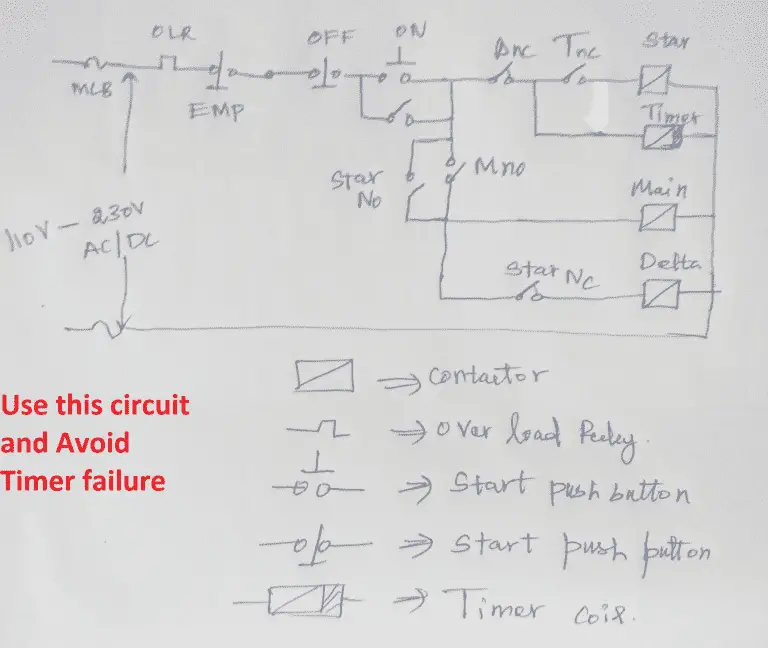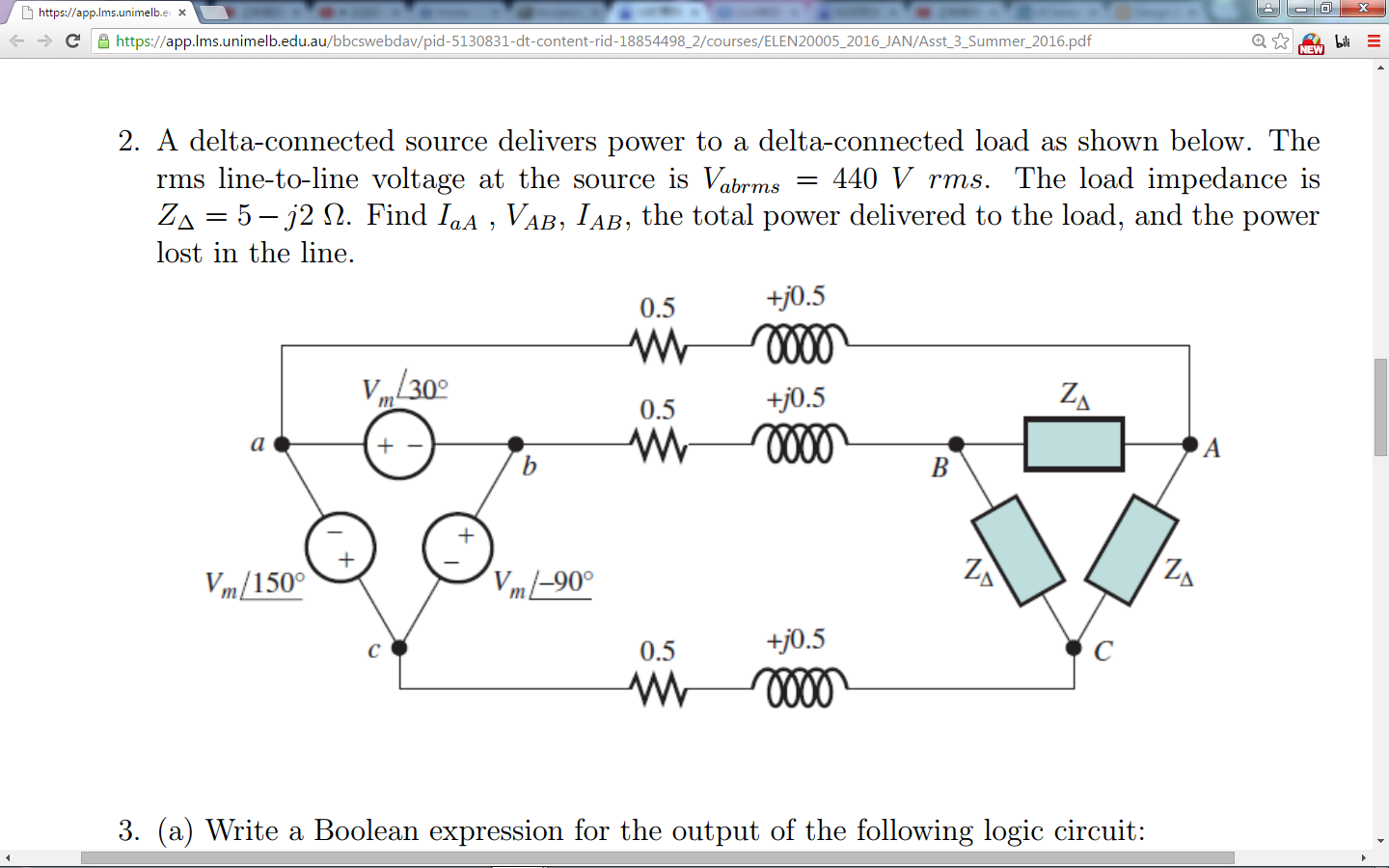

Let’s see how this works in an example circuit: (Figure below) Not surprisingly, the resulting equations for a Δ configuration are as follows:ĭelta Connection Example Circuit Analysis Having established that a Δ-connected three-phase voltage source will not burn itself to a crisp due to circulating currents, we turn to its practical use as a source of power in three-phase circuits.īecause each pair of line conductors is connected directly across a single winding in a Δ circuit, the line voltage will be equal to the phase voltage.Ĭonversely, because each line conductor attaches at a node between two windings, the line current will be the vector sum of the two joining phase currents.

Sure enough, there will be zero voltage across the break, telling us that no current will circulate within the triangular loop of windings when that connection is made complete. Starting with the right winding (120 V ∠ 120°) and progressing counter-clockwise, our KVL equation looks like this: The voltage across open Δ should be zero. Another way to verify the fact that these three voltage sources can be connected together in a loop without resulting in circulating currents is to open up the loop at one junction point and calculate the voltage across the break: (figure below) Indeed, if we add these three vector quantities together, they do add up to zero. Starting with the top winding and progressing counter-clockwise, our KVL expression looks something like this: If they do, then there will be no voltage available to push current around and around that loop, and consequently, there will be no circulating current. One quick check of this is to use Kirchhoff’s Voltage Law to see if the three voltages around the loop add up to zero. Kirchhoff’s Voltage Law in Delta Connections Three-phase, three-wire Δ connection has no common.Īt first glance, it seems as though three voltage sources like this would create a short-circuit, electrons flowing around the triangle with nothing but the internal impedance of the windings to hold them back.ĭue to the phase angles of these three voltage sources, however, this is not the case. Take close notice of the polarity for each winding in the figure below. Three-Phase Delta(Δ) ConfigurationĪnother configuration is known as the “Delta,” for its geometric resemblance to the Greek letter of the same name (Δ).

However, the “Y” configuration is not the only valid one for connecting three-phase voltage source or load elements together. If the Y-connected source or load is balanced, the line voltage will be equal to the phase voltage times the square root of 3: Y-connected sources and loads always have line voltages greater than phase voltages, and line currents equal to phase currents.

The terms line current and phase current follows the same logic: the former referring to the current through any one line conductor, and the latter to the current through any one component. Phase voltage refers to the voltage measured across any one component (source winding or load impedance) in a balanced three-phase source or load.įor the circuit shown above, the phase voltage is 120 volts. With the above circuit, the line voltage is roughly 208 volts. Line voltage refers to the amount of voltage measured between any two line conductors in a balanced three-phase system. When we measure voltage and current in three-phase systems, we need to be specific as to where we’re measuring. Voltage and Current Values in Three-Phase Systems Three-phase, three-wire “Y” connection does not use the neutral wire. In a Y-connected system, there may or may not (Figure below) be a neutral wire attached at the junction point in the middle, although it certainly helps alleviate potential problems should one element of a three-phase load fail open, as discussed earlier. The three conductors leading away from the voltage sources (windings) toward a load are typically called lines, while the windings themselves are typically called phases. Three-phase, four-wire “Y” connection uses a “common” fourth wire. If we draw a circuit showing each voltage source to be a coil of wire (alternator or transformer winding) and do some slight rearranging, the “Y” configuration becomes more obvious in Figure below. Three-phase “Y” connection has three voltage sources connected to a common point. This configuration of voltage sources is characterized by a common connection point joining one side of each source. Initially, we explored the idea of three-phase power systems by connecting three voltage sources together in what is commonly known as the “Y” (or “star”) configuration.


 0 kommentar(er)
0 kommentar(er)
